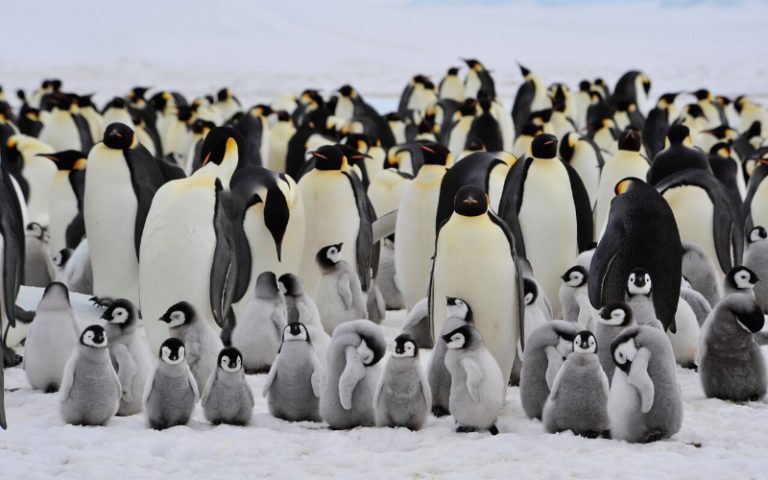
Topics covered
More than three years have passed since the Paris climate agreement came into force. Yet we are still a long way from achieving the objectives set. The survival of the emperor penguins also depends on compliance with the treaty. These animals are counting on us not to become extinct by the end of the century.
Emperor Penguins – Another Victim of Climate Change
Eighty years: this is what would remain (at most) to the emperor penguins before extinction. As long as we don’t do something to reduce greenhouse gas emissions and counteract the melting of the ice.
This is not the first time the Woods Hole Oceanographic Institution (Massachusetts) has warned us. This time it does so by publishing a study on Global Change Biology, in which it stresses how much the survival of this species now depends more than ever on us.
Only by meeting the objectives of the Paris Agreement, which sets the maximum global temperature increase at 1.5°C (about 2.7°F), can we save the emperor penguins from extinction. In this way we will reduce the population “only” by less than a third.
The Importance of Ice
The fewer the sea glaciers, the more the penguins are in trouble. This species in fact, in addition to need stable sea ice on which to nest, feeds on krill, tiny crustaceans whose habitat is influenced by the melting of the glaciers. “Penguins are an indicator species. They are warning us about the future effects of climate change,” says Stephanie Jenouvrier of the Woods Hole Oceanographic Institution. “We must listen to them, and implement the policies necessary to meet the objectives of the Paris Accord”.
There have already been strong signs. For three consecutive years, in fact, the Halley Bay penguin colony has been unable to reproduce because of the melting ice.
The Future of the Emperor Penguins
Jenouvrier and his colleagues have hypothesized three future scenarios for the emperor penguin population, which they estimate to be 595,000. In the first case, if we respect the limit of 1.5°C global temperature increase, the population would decrease by only 31% by 2100. In the second case, with an increase of 2°C (the minimum objective of the Paris Agreement), the population would fall by 44%. Finally, if emissions continue to increase, the population would drop from 81% to 86%. “There would be so few specimens left that, in ecological terms, there would be talk of extinction,” says Jenouvrier. Therefore, action must be taken now.









